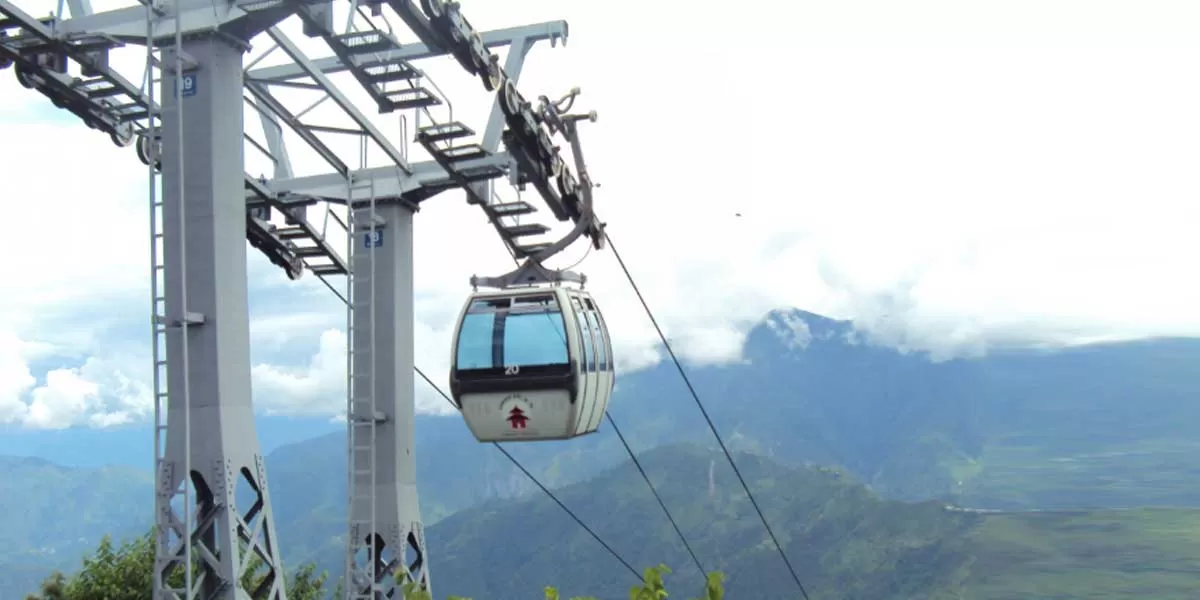“For the first time in the country, the 'Parvatmala scheme' is being started for areas such as Himachal Pradesh, Uttarakhand, Jammu-Kashmir, and the North-East. This scheme will create a modern system of transportation and connectivity on the mountains. It will also strengthen the border villages of our country, which need to be vibrant, and which is also necessary for the security of the country.” – Prime Minister Narendra Modi
The Cabinet Committee on Economic Affairs (CCEA), chaired by Prime Minister Narendra Modi, has approved two significant ropeway projects in Uttarakhand under the National Ropeways Development Programme – Parvatmala Pariyojana. The 12.4 km Govindghat to Hemkund Sahib Ji ropeway is set to be developed at a cost of Rs 27.30 billion, while the 12.9 km Sonprayag to Kedarnath ropeway has been sanctioned at Rs 40.81 billion. Both projects will be executed under the Design, Build, Finance, Operate, and Transfer (DBFOT) model within a Public-Private Partnership (PPP) framework.
Developing an efficient transport network in hilly regions presents significant challenges, with limited rail and air transport infrastructure and technically demanding road construction. Against this backdrop, ropeways have emerged as a safe and convenient alternative. Recognising this potential, the Government of India announced the National Ropeways Development Programme – Parvatmala in the 2022 Budget under the PPP model. Implemented by the National Highway Logistics Management Limited (NHLML), the initiative aims to develop over 250 ropeway projects covering 1,200 km within five years, offering a sustainable and efficient alternative to traditional road transport. In line with the ‘Make in India’ initiative, the programme mandates at least 50% indigenous components in ropeway construction, ensuring minimal environmental impact while providing a cost-effective, energy-efficient, and reliable transport solution for India's mountainous terrains.
Ropeway infrastructure offers multiple advantages, including reduced land acquisition costs, as they require minimal ground construction, making them more economical than roads in the long term due to lower maintenance costs. Their ability to provide a direct aerial route ensures faster travel by bypassing hilly and challenging terrains. Environmentally friendly by design, ropeways generate minimal dust emissions and can be configured to prevent pollution. They also serve as an efficient solution for last-mile connectivity, enabling mass transit while promoting tourism and economic growth.
The Sonprayag-Kedarnath Ropeway Project, spanning 12.9 km, has been approved under the Parvatmala Pariyojana at a cost of Rs 40 billion. Developed using advanced Tri-cable Detachable Gondola (3S) technology, it will have a capacity of 1,800 passengers per hour per direction and will significantly reduce travel time from the current 8-9 hours to just 36 minutes. This eco-friendly and all-weather connectivity will enhance accessibility for the 20 lakh annual pilgrims visiting Kedarnath while creating jobs and boosting tourism.
Similarly, the Govindghat to Hemkund Sahib Ji ropeway will provide all-weather connectivity, replacing the arduous 21-km trek with a modern transport system. The project will incorporate a Monocable Detachable Gondola (MDG) from Govindghat to Ghangaria (10.55 km) and a Tricable Detachable Gondola (3S) from Ghangaria to Hemkund Sahib Ji (1.85 km). With a capacity of 1,100 passengers per hour per direction, it will transport up to 11,000 passengers daily, making the revered Sikh pilgrimage site at 15,000 ft more accessible. Hemkund Sahib Ji, which attracts 1.5–2 lakh pilgrims annually and is situated near the Valley of Flowers (a UNESCO World Heritage Site), will benefit from increased tourism and regional economic growth.
Beyond these religious sites, the Parvatmala Pariyojana is set to transform connectivity in states such as Uttarakhand, Himachal Pradesh, Jammu & Kashmir, Arunachal Pradesh, and Sikkim. By reducing congestion in urban areas and providing a vital transportation link in remote regions, the initiative will enhance daily commuting, promote tourism, generate employment, and support local businesses and industries. The government has planned 60 km of ropeway projects for award by FY 2024-25, with Memorandums of Understanding (MoUs) already signed with 13 states and Union Territories, including Uttar Pradesh, Jammu & Kashmir, Himachal Pradesh, Uttarakhand, Assam, and Maharashtra.
Among the ongoing projects, the Varanasi Urban Ropeway stands out as India’s first urban ropeway initiative, designed to alleviate congestion in the city’s densely populated areas. In March 2023, the foundation stone was laid by Prime Minister Narendra Modi for this 3.85 km project, which is currently under construction from Varanasi Cantt. Featuring 148 gondola cabins, it will have the capacity to transport up to 96,000 passengers per day, offering an eco-friendly and efficient alternative to road-based transit.
Additionally, the Gaurikund-Kedarnath Ropeway, spanning 9.7 km at an altitude of 3,584m, will drastically cut the existing 7-9 hour trek to just 28 minutes. Using tri-cable detachable gondola technology, it will carry 3,600 passengers per hour per direction, significantly improving accessibility to one of India’s most revered pilgrimage destinations.
With its emphasis on enhancing connectivity in challenging terrains while minimising environmental impact, the Parvatmala Pariyojana is poised to redefine transportation in India’s mountainous regions. By integrating modern ropeway technology with sustainable development goals, the initiative will not only improve travel efficiency but also stimulate economic growth, create employment, and ensure safer and more reliable transit options for millions of people.




















